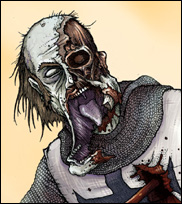When sparring with batons, short sticks between 14-24 inches, the most important offensive consideration is that you score a combination head stroke or strokes with a simultaneous shoulder check to the shoulder of his weapon arm.
This check stroke is the holy grail of short stick fighting with a single baton. If anywhere near evenly matched, a fighter who scores two strokes to the opponent and does not check his counter will end up trading head shots in smashing range.
Both our training and competition sets are geared towards survival and street defense. A fit man may not expect to legally survive the aftermath of an encounter resolved combatively in his favor, if he was using a baton or similar weapon against an unarmed individual. The only excuse for using a weapon if you are fit is that they are armed [probably with a knife and trading baton for knife strokes is idiotic] or that they outnumber you or are far stronger.
Since your weapon will not be long enough to fight at long range, you must be able to trap weapon counters and also use the foe your stroke as a post to shield or move against his accomplices.
The ideal 1-on-1 armed sequence is to strike his weapon hand, check his weapon shoulder and navigate on his weapon side as you smash or fan the head, moving away from his empty hand. Your weapon is adequate, in the absence of head gear, to drop your opponent, so don’t play around for the disarm, which requires committed, heavy control, but keep maneuvering so as to be able to deal with multiple foes.
Also practice navigating to his empty hand side without him checking your weapon arm.
The first three videos below are sparring with 24-inch transitional sticks and features numerous checking attempts. Going all out fighting with this length stick will not be done at this range. This is “yoyo” range practice for self-defense, trying to enter, operate and leave the mid range where one might be forced to deal with unarmed groups, aggressive knifers and aggressive giants, but where stick fights are rarely conducted at length. [When they are they are crowd pleasers.]
Notice that the tempo increases as the session progresses, with the later phases of rounds 2 & 3 picking up pace.
Never start out sparring at a high pace unless working on round starts in preparation for competition.
In the third part of video 3 we transition to long sticks, which is good for stroke conditioning and for increasing time and measure adaptability.
This video shows the baton length stick used on the bag. Imagine that stroke velocity delivered without gear and you have an idea of how quick this would go on the street.
Being a Bad Man in a Worse World
Fighting Smart: Boxing, Agonistics & Survival











